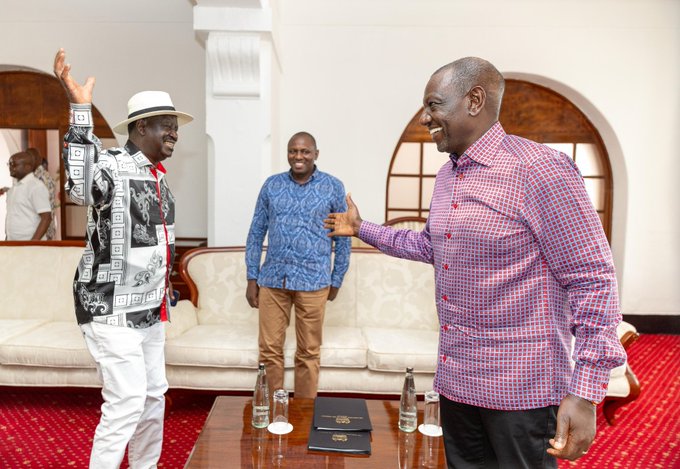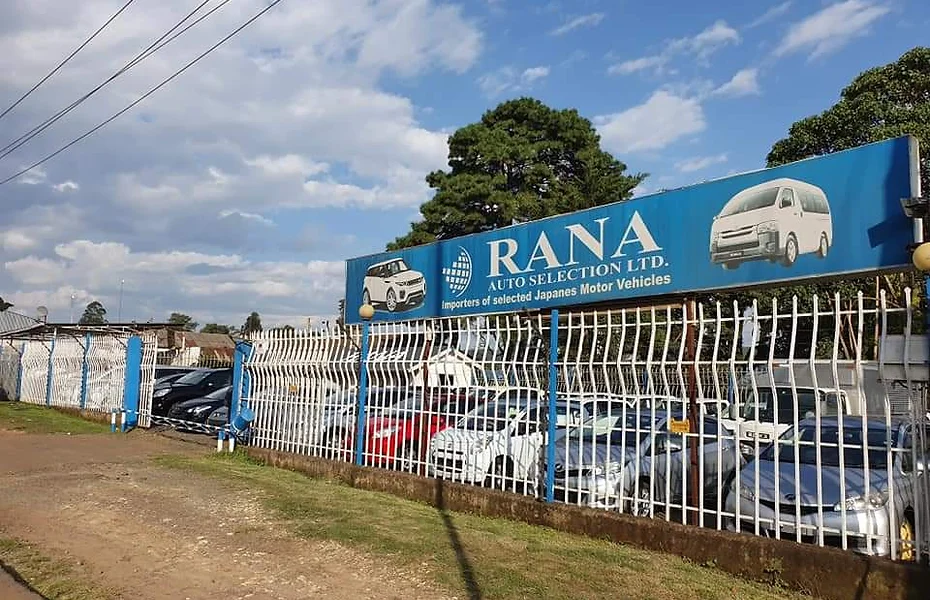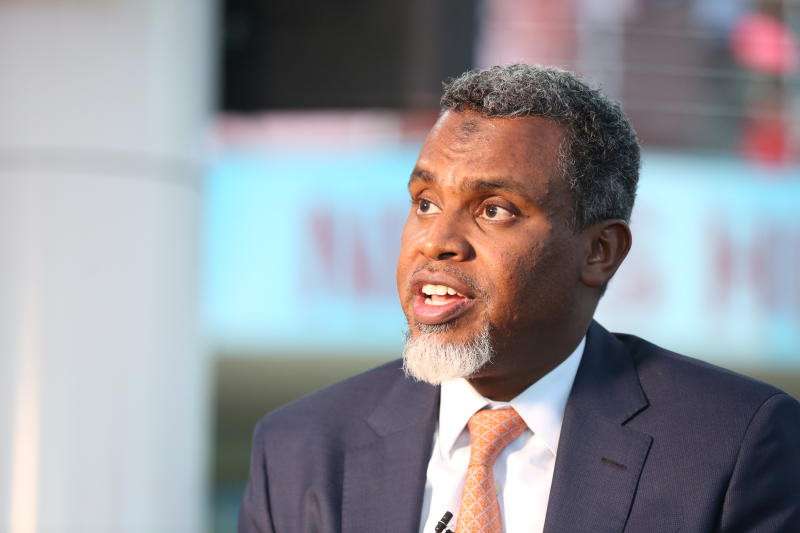By TWV Team
President William Ruto is executing a high-stakes political manoeuvre aimed at redrawing Kenya’s electoral map ahead of the 2027 general election. This week, in a stunning twist of political theatre, Ruto welcomed Siaya Governor James Orengo, a longtime ally of opposition leader Raila Odinga and one of Ruto’s fiercest critics, to State House in Nairobi. The move sent ripples across the political establishment, raising eyebrows within both the ruling coalition and the opposition ranks.
The meeting, cloaked in official language about “enhancing service delivery” and “inclusive development,” was far from routine. Accompanied by Siaya Senator Oburu Oginga and other prominent leaders from Raila’s Nyanza stronghold, Orengo cut a markedly different figure: suited, smiling, and seated next to the President. Photos of the two laughing together went viral, fuelling speculation about a deeper political détente between camps once thought irreconcilable.
While Ruto rolled out the red carpet for Orengo’s delegation, announcing KSh 1 billion for Usenge Pier, KSh 2.5 billion for market infrastructure, and a KSh 1.6 billion electricity rollout, the political storm was just beginning.
Meanwhile, another meeting at State House took a confrontational tone. Leaders from Western Kenya, led by National Assembly Speaker Moses Wetang’ula, came bearing grievances rather than gratitude. They accused the Ruto administration of skewed resource allocation, claiming that Nyanza had received more money for road projects than Western Kenya. Discontent ran deep, with some MPs describing the meeting as “chaotic.” An unnamed legislator warned that unless the imbalance is corrected by July 2025, support for Ruto in the region would be reconsidered.
This marked a rare show of defiance from a bloc that had enthusiastically backed Ruto’s 2022 presidential bid. “We told him the ground is not happy,” a source said. “The development is not visible, and our people feel betrayed.” The President reportedly urged dissenting MPs to align with the national agenda rather than criticise it from within, reiterating his commitment to equitable development.
The tensions in Western Kenya contrast sharply with Ruto’s warm embrace in Siaya, the heartland of opposition politics. Since taking office, Ruto has made calculated visits to Nyanza, rolling out development promises and cultivating ties with ODM governors, moves seen as efforts to undercut Raila’s dominance in the region.
The emergence of the “Broad-Based Government” (BBG) has further blurred political lines. Advocates claim it promotes national cohesion, while critics see it as a veiled attempt to neutralise the opposition through development incentives. Long resistant to this arrangement, Orengo is now balancing his loyalty to ODM with his role as county chief.
However, cracks within ODM are surfacing. Senator Oburu Oginga, Raila’s brother, openly criticised Orengo’s hesitation, suggesting the governor step down if he cannot back the party’s direction. “There is no room for leaders to reject the very party that gave them a platform,” Oburu declared. ODM Secretary-General Edwin Sifuna has issued mixed signals, cautioning members against embracing the government too quickly, while others quietly shift allegiances.
Absences at the Western Kenya meeting were telling. Prime Cabinet Secretary Musalia Mudavadi was abroad, but Senator Boni Khalwale and MP Wanami Wamboka skipped the gathering in protest. Wamboka dismissed the engagements as fruitless, stating, “We’ve had too many of these meetings with no tangible results.”
Ruto’s strategy is bold but risky. By courting the opposition’s base, he risks alienating his early backers. Yet he appears confident, even defiant, proclaiming his political invincibility for 2027 in prior meetings with Western leaders. A political analyst says, “Ruto is trying to collapse traditional strongholds and rebuild new political blocs, but in doing so, he may be creating silent enemies in his camp.”
As Kenya’s political landscape shifts, rigid loyalties are fading, replaced by pragmatism. Ruto is betting that development in opposition regions will win new allies and voters, but this gamble could backfire if loyal regions feel neglected. For now, at least for the cameras, Orengo is in his corner. Behind State House’s walls, discontent continues to grow.




